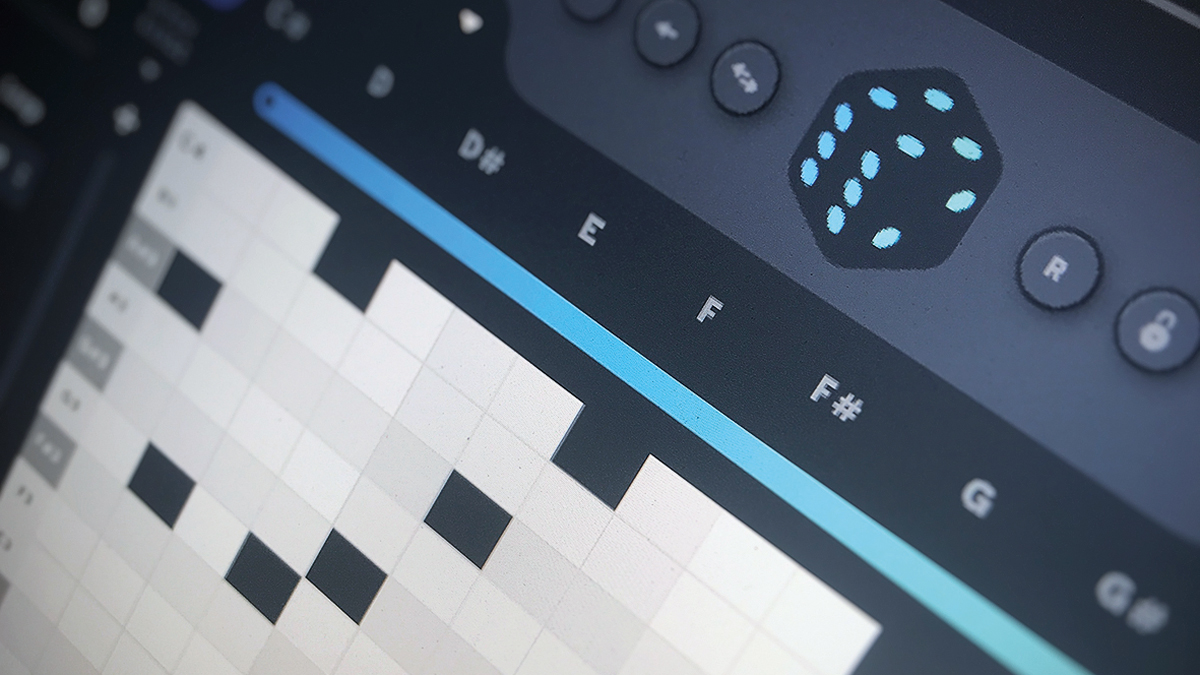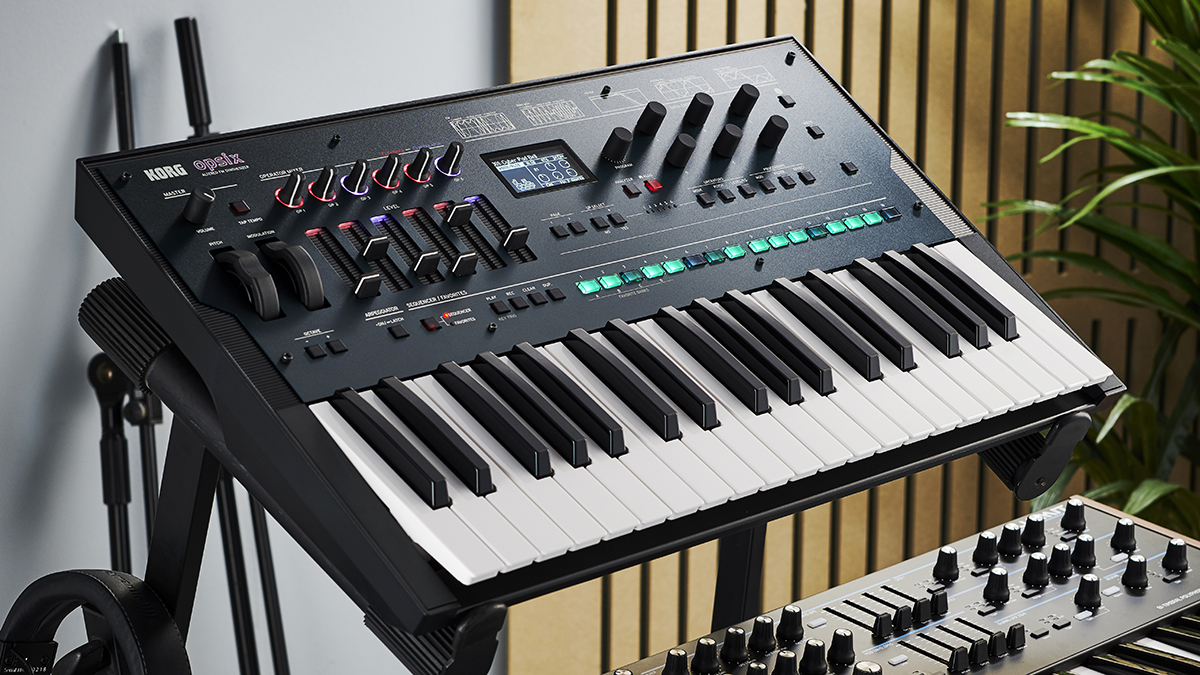Ordered chaos: a guide to randomisation, probability and generative music
Randomisation and probability tools seem to be everywhere these days. But why, how and when should we use them?

A reliance on chance when it comes to music making can, arguably, clash with the image we create for ourselves as musicians.
Whether we’re talking about writing, sound design or mixing, musicians tend to think of themselves – not without justification – as craftspeople, meticulously considering every last element of their creation and how it contributes to the overall vision. Admitting that some of that process was left up to chance would, surely, run contrary to that?
Whether we acknowledge it or not, though, for many of us an element of unpredictability is inherent to the creative process. Sure, there are some musicians who begin with a fully-formed track in their head and know how to execute it perfectly, but for the majority of us inspiration is often a case of trial and error; whether it comes from stumbling upon the perfect hook through aimless noodling or jamming, creating a wild new sound through the unpredictable pairing of effect processors, or absentmindedly flicking through instrument presets to find the basis for a track. Just consider how regularly artists espouse the importance of ‘happy accidents’ in their workflow.
What’s evident from all of these examples is that incorporating unpredictability into your music isn’t a simple on/off affair. It’s not a case of simply hitting ‘randomise’ and letting an algorithm auto-generate a full track for you. At the very least there’s an element of control and curation, selecting what elements to apply unpredictability to, as well as deciding when to keep the results and when to opt for another roll of the dice. So, how do you incorporate these ideas into your music-making workflow?
Predictably unpredictable
We’ve used the word ‘unpredictability’ so far, but we’re actually discussing several similar although distinct concepts, and it’s important to differentiate between them in music-making terms.
At one end of the spectrum we have random generation, which in this sense we’re using to describe a fully unpredictable process of selecting an outcome out of a preset range of results. Take a six-sided dice as an example: it’s essentially a random number generator whereby any one of six outcomes could come up each time the dice is thrown.
In a music-making sense, this idea could be related to the random mode common on many arpeggiators, where each new note in an arpeggiated pattern is picked at random from a selection input by the user.
Want all the hottest music and gear news, reviews, deals, features and more, direct to your inbox? Sign up here.
Another example would be the parameter randomisation tools available in instruments such as Korg’s opsix or Wavestate, which can - in their most basic mode, at least - completely randomise the settings of an instrument’s sound engine to auto-generate a new patch in an unpredictable way.

These days, most electronic musicians have access to multiple sources of randomisation. In both the software and hardware realms it’s common to find LFOs with a ‘random’ option among the list of waveshapes. Like a conventional waveshape, this will output modulation changes clocked to tempo or rate control, but the output values themselves are selected at random.
Technically, the output of some random LFOs isn’t what you’d call ‘true’ random - particularly in the software realm, defining pure randomisation can be a thorny subject, and some tools actually make use of complex patterns or difficult-to-predict algorithms. In most cases, however, that’s not something worth getting too hung up on.
A similar tool that can be used for randomised modulation is the sample & hold generator, a common feature found on many analogue or modular synths. It does what the name suggests - when triggered, it will take a sample of an incoming voltage signal and ‘hold’ the level of its output to match that sample until triggered again.
This doesn’t necessarily create a random output automatically; if both the input voltage and trigger source are regular, predictable signals, they’ll combine to create a predictable output. If a noise source is used as the input, however, it can result in a random voltage output. This is what’s used to create the random LFOs on many analogue synths.
These sources both deal with modulation, or real-time randomisation, but plenty of tools offer options for ‘offline’ randomisation, too - one-time random generation of sequences or parameter settings. There are also multiple software solutions, including tools within several major DAWs, that let users randomise the pitch or velocity of incoming MIDI notes.
Probable cause
Full-blown randomisation can be a little too chaotic for many musical purposes, which is why it’s often useful to constrain the scope of the randomisation or temper it with an element of probability.
Many randomisation tools let users add constraints as part of their built-in workflow. A random velocity generator might, for example, allow users to set upper and lower thresholds within which the random values must be contained, or parameter randomisation tools may let users target the effect to just certain areas of an instrument.
Probability, meanwhile, is common in many modern sequencers. This allows users to assign a value, usually as a percentage, dictating how likely a certain event is to occur each time a sequencer loops.
It’s often useful to constrain the scope of the randomisation or temper it with an element of probability.
For example, if we assign a certain note in a sequence a probability of 80%, then each time the sequencer cycles, there’s an eight out of ten chance that particular note will trigger. There’s still an element of randomisation here, albeit moderated.
Since our sequencer is making this probability-based decision afresh each time it cycles, there’s no guarantee our note will trigger on eight out of ten times. We’re simply ascribing a likelihood that the note will be included in each individual cycle of our sequence.
Using probability in this way can be a fantastic tool for creating unpredictable variations to a melodic line or drum pattern, albeit ones that adhere to your own design. Try, for example, enhancing a repetitive drum pattern with probability-based ghost hits, or use probability-guided notes to augment a simple synth riff to replicate the effect of a player improvising around a theme.
Generation game
Generative music was made famous by Brian Eno, which is fundamentally different to randomisation, although the ultimate effect can be broadly similar. What links the two approaches is that in both cases we’re effectively handing a certain part of the creative process over to the ‘machinery’.
With probability and randomisation that involves setting the likelihood a certain event will take place, or assigning a set of potential outcomes, and then letting your instrument or software decide what takes place. Generative music, on the other hand, involves creating rules and systems dictating exactly what is going to happen, and then taking a hands-off approach as your musical creation unfolds.
Unlike randomisation, generative systems are usually technically entirely predictable, although they’re set up in a way so as to create evolving patterns or sounds with a level of complexity that’s unpredictable to the human ear. They often involve creating loops of differing and unusual lengths so that - unlike in conventional loop-based music - the start points of the loops never, or very rarely, fall in sync with one another. As a result, rather than creating predictable musical phrases, the interaction of these uneven loops creates an ever-changing patchwork of interaction.
There are also speciality tools out there that make it incredibly easy to apply these ideas. Probably most notable is Bloom, a generative music app created by Brian Eno himself, along with collaborator Peter Chilvers. Bloom takes an accessible and rather artistic approach to music creation and, as with similar generative apps such as Endel, it blurs the line between a music creation tool and algorithmic music player.
These tools, and generative or randomised music making in general, can raise interesting questions about the nature and ownership of creativity. At what point do you move from music maker into merely being somebody interacting with the music? It’s one thing to create music using systems or probability, but what if you’re using somebody else’s devised systems? And at what point does assigning probabilities cross over into sheer luck or the draw?
We’re not going to answer those questions here. However, all of these ideas can be harnessed in undeniably creative and inspirational ways.
Future Music is the number one magazine for today's producers. Packed with technique and technology we'll help you make great new music. All-access artist interviews, in-depth gear reviews, essential production tutorials and much more. Every marvellous monthly edition features reliable reviews of the latest and greatest hardware and software technology and techniques, unparalleled advice, in-depth interviews, sensational free samples and so much more to improve the experience and outcome of your music-making.
